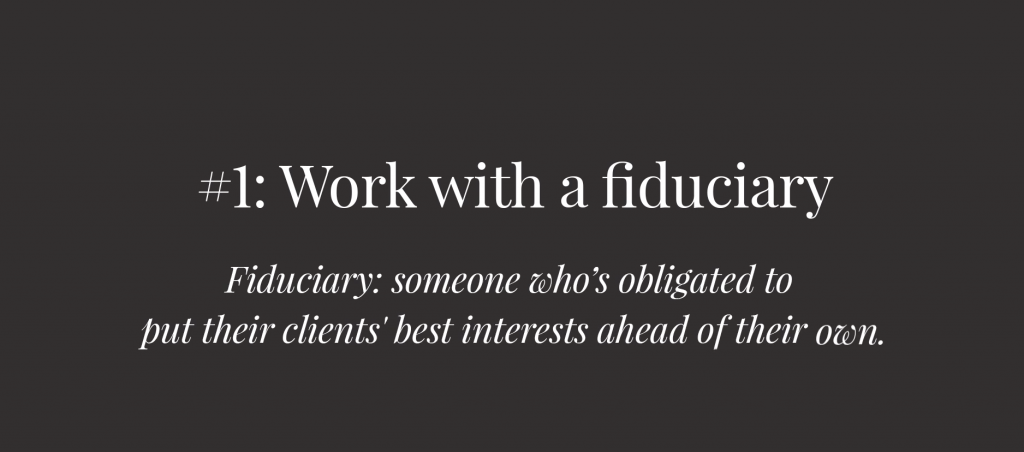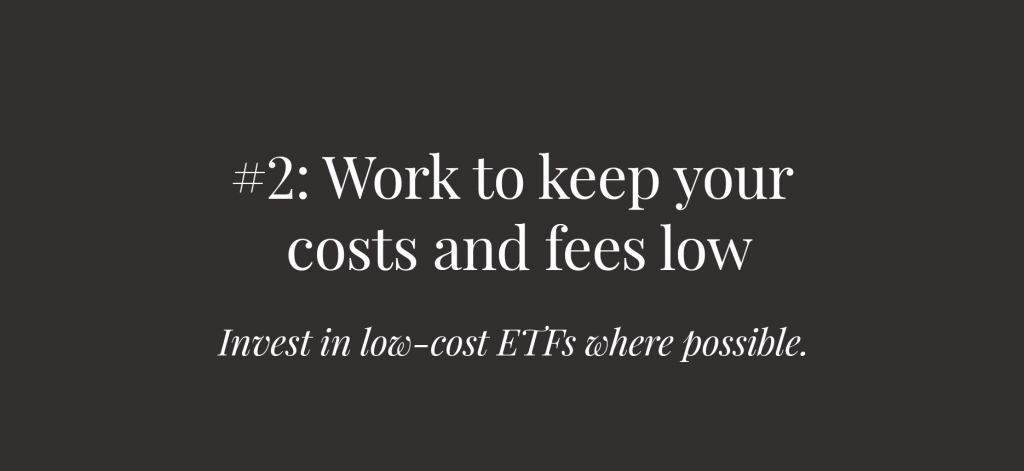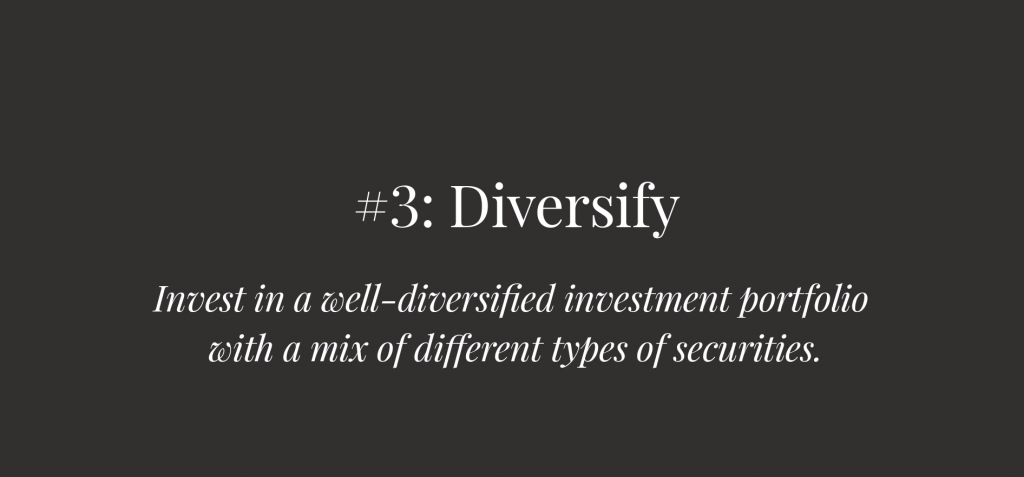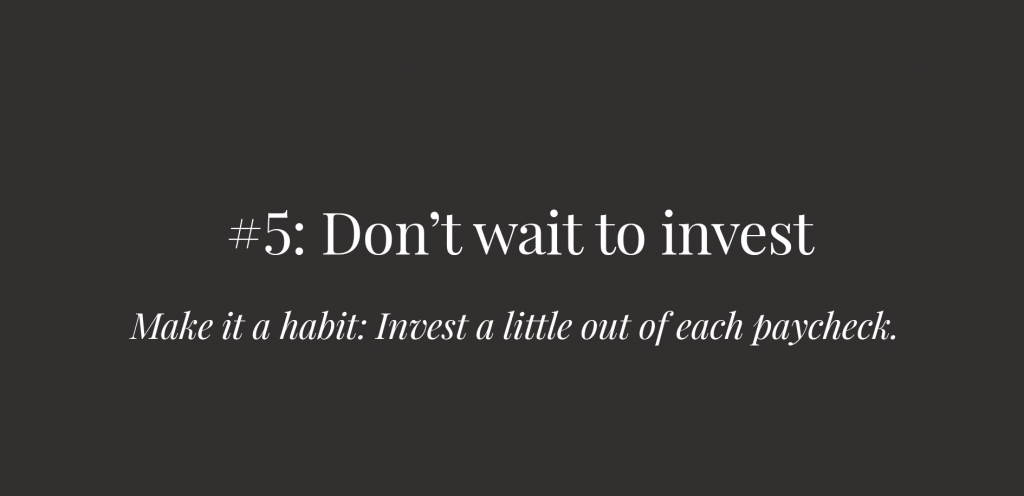Investing your money — when done right — is one of the best ways to build wealth.
But the uncertainty, lack of knowledge, and “risk” that comes with the markets is very often a major obstacle ⏤ especially for women. Data suggests that 80% of women do not have an investment portfolio, compared to 66% of men. But we want to change that statistic.
We all know the stats about the gender pay gap, but the gender investment gap is costing us far more over the course of our lives. According to Sallie Krawcheck, co-founder and CEO of Ellevest, an investment service designed for women. “We can’t make the market go up but we can actively make the decision to invest,” she said. “If you want a pay raise, your boss has to decide if that should happen. Investing is an action you can take on your own.”
“All the evidence demonstrates that men feel more financially confident, but that doesn’t mean they are better at it or more knowledgeable about investing, they just go for it even if they don’t particularly understand,” Krawcheck says. Nobody can play the market. But the FTSE 100, which is composed of the largest companies listed on the London Stock Exchange, has gone up more than 600% since 1984, and that includes the tech bubble of the early 2000s and the financial crisis of 2008.
In other words, keeping your money in your current bank account won’t make it grow. It will only reduce in value as inflation rises (truth). This is why successful women use financial technology – or “FinTech” – to streamline their finances.
We’ve already covered how to slay student loans and pay down those high-interest loans and what to do with your retirement savings, now we’re tackling what you need to know before you invest.
We hear from a lot of women that they think they need to be a financial expert before they get started investing. You don’t. You really only need to know 5 things.
1. Work with a Fiduciary

Fiduciaries are advisors who are legally bound to put their clients’ interests above their own. This is important for trust and peace of mind as a new investor. Contrary to belief, not all firms are fiduciaries and legally obligated to tell you when they have a conflict of interest like getting paid for the investment product they are selling you.
You should ask any investment providers you use or are considering, whether they are a fiduciary.
2. Keep Costs Low.

Since markets are unpredictable, we know we can’t control them. One thing we can control? The fees we’re paying. Research shows that fees are negatively correlated with investment performance, meaning funds with the highest fees generally do worst, and vice versa. What’s a low fee? At Ellevest, they believe you shouldn’t pay more than 0.20% overall for the funds in your portfolio, no more than .5% for a digital advisor, and if you use a human advisor, no more than 1% in advisory fees.
Digital platforms such as Ellevest keep costs low by offering managed assets at an affordable rate.
Bottom line: learn what questions to ask up front so you know what you’re paying in fees.
3. Diversify

As women, we are risk aware, and because of that investing scares many of us. But, think about it: no risk, no reward. All investing inherently involves risk — if there was no risk, you’d just be “saving,” earning almost zero return, and actually losing money over time (what you may be doing now if you’re keeping your cash in the bank).
Since markets can get volatile, and we can’t really predict which investments will perform the best, the key to reducing risk is to diversify across different asset classes, like U.S. and international stocks, global bonds, and real estate. There are literally thousands of investments to choose from these days. Some try to predict which stocks will do the best in the coming year, others try to choose asset classes that will outperform, and some have strategies with made-up names I can’t even pronounce. Research shows, however, that straightforward, low-cost index funds outperform nearly all of those strategies in the long run. At Ellevest, they allocate across 21 different asset classes in their goal-based portfolios. Just like how in work diversity makes for better teams, when you’re investing, it makes for better investment portfolios too.
4. Change Gears as You Get Older
Buy low! Sell high! We’ve all heard those not-so-useful investing clichés, usually in cartoonish depictions of Wall Street. While market timing — knowing when the market will be “low” or “high” — is the holy grail of investing, it’s nearly impossible to do. Very, very, very few people can time the market well, and even fewer can do it consistently.
Wondering what your money goals should even be at your age? You’re not alone. Here are some smart moves to make in every decade, starting with your 20s, from our friends at Ellevest.
At Ellevest, they’re all about getting you to realize your biggest goals — whether that be planning for retirement, saving for that Aussie vacation, or starting a family. So with Ellevest, you’ll hear the phrase “goals-based investing.” Basically, what this means is that their investment objective is to help you reach your goals. That’s very different from trying to outperform some market index. Makes sense. Doesn’t it?
Questions on this? See how goals-based investing works. The takeaway: learn how to make smart decisions about risk for different kinds of financial goals and how to think about that risk over time. Which leads us to the next rule…
5. Don’t Wait to Invest

Don’t think you have enough to invest. You do have enough. With a Robo-advisor like Ellevest, there’s no minimum to get started, so you can start wherever you are. (Seriously — start with $1, $5, or $500 … all good.) The point is to start and to invest regularly, whether it’s with every paycheck, every week, month, or quarter. The goal is to eventually be setting aside 20% of every paycheck to Future You. Follow this rule of thumb, says founder of Ellevest, Sallie Krawcheck, and you’ll be set for financial success over the course of your life.
Not sure how much to invest? Learn the smart way to break down your monthly income so you don’t keep waiting to invest.
In a planning mood? See how an investment plan could help you manage your finances.You can get a personalized portfolio in under 10 min. And it’s made by women, for women.

The Bottom Line:
Make investing a routine like brushing your teeth or happy hour on Tuesday. Although there are risks that come with investing your money, there is also the potential for rewards — namely, helping you grow your money so you can meet your financial goals faster than if you had, say, put your money away in a basic savings account. So start today, even if you put away 2% of your income into a 401(k) or an IRA. Your future self will thank you.
The Get-Started Guide to Investing: 5 Things All Investors Need to Know from Ellevest on Vimeo.
For when you don’t have a retirement fund…
Don’t sound the alarm – yet. Ellevest can get you set up in less than 10 minutes so you can reach all of your money goals. Sans judgment, finance jargon, and trust issues. Crisis averted. Get into it here.*

In search of even more financial wisdom, here are more personal finance topics for you:
The One Money-Habit All Wildly Successful Women Share
5 Simple Steps: How to Start Budgeting for the First Time
3 Reasons Why You Need a Roth IRA- Even If You Have a 401(k)
Disclosures: We’re excited to be working with Ellevest to start this conversation about women and money. We receive compensation if you become an Ellevest client.
Questions? We’re here to help. Leave us a comment and we’ll get back to you!





